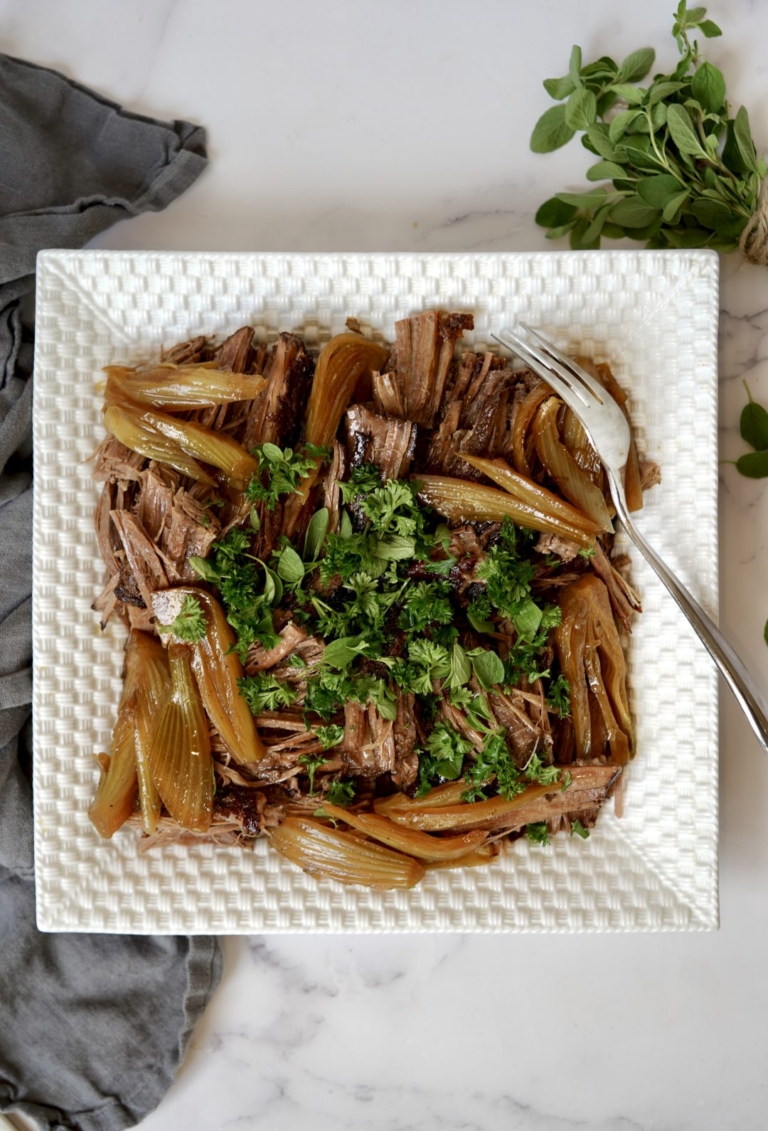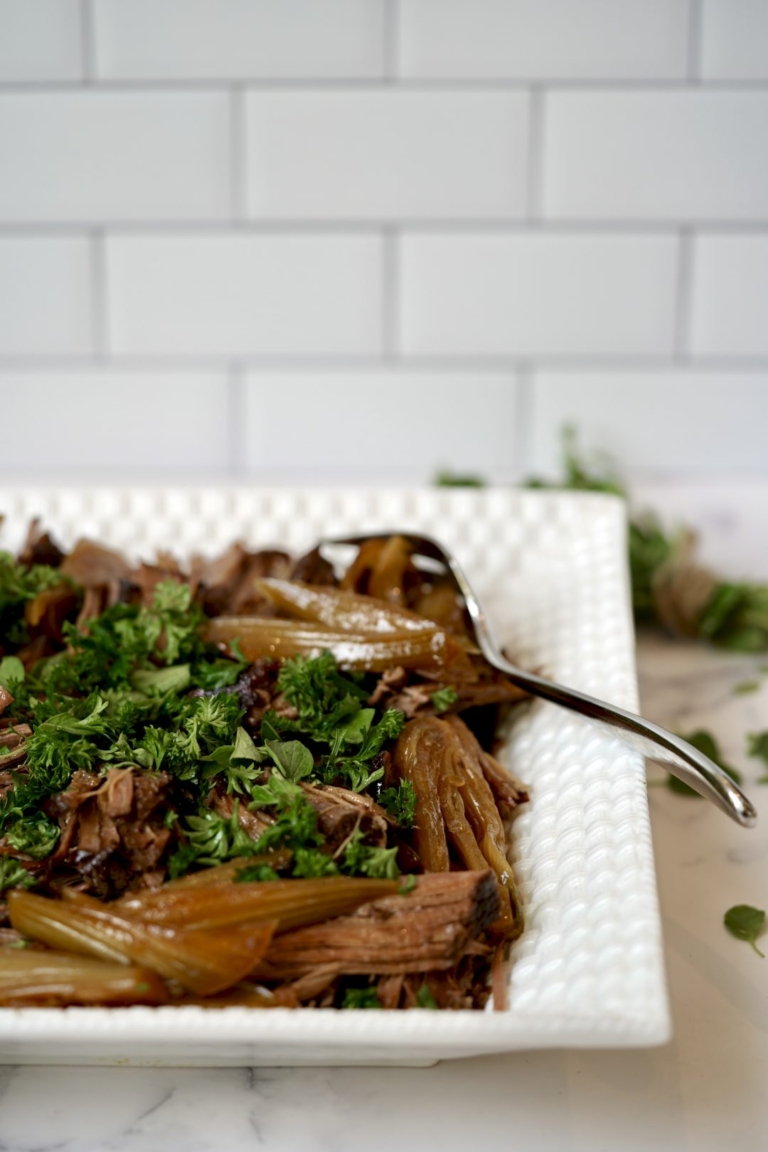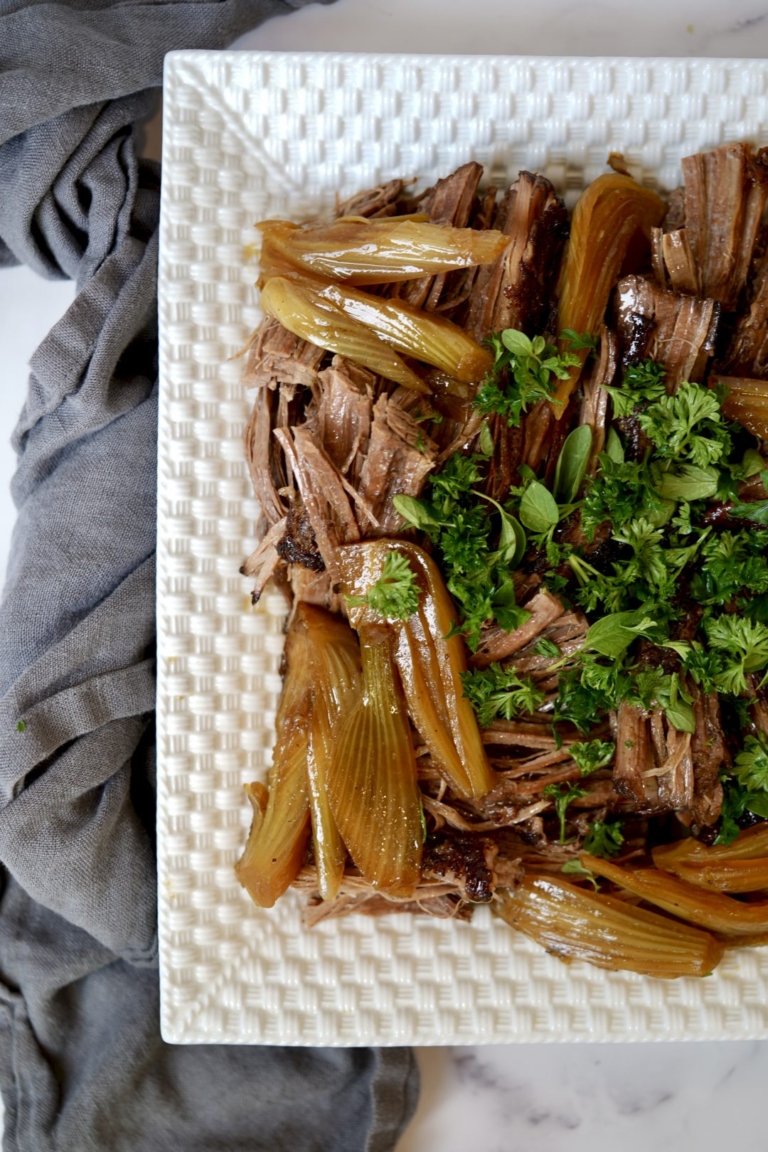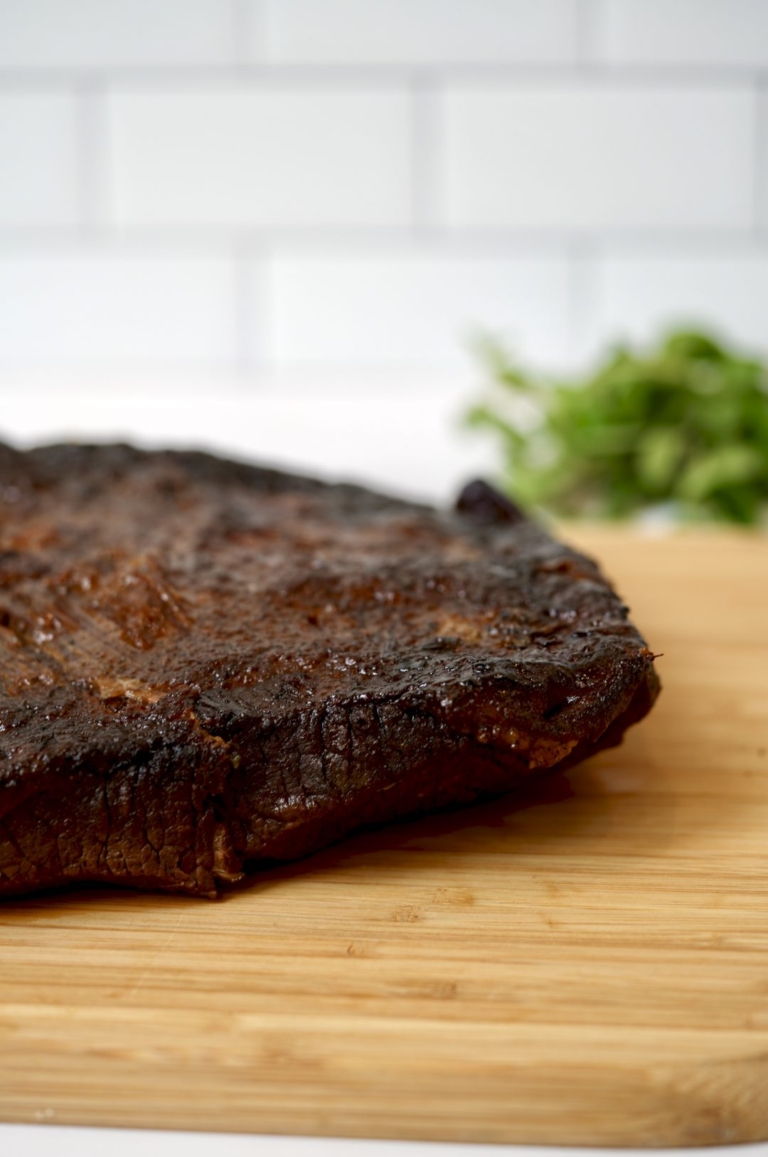Braised Brisket With Fennel and Shallots
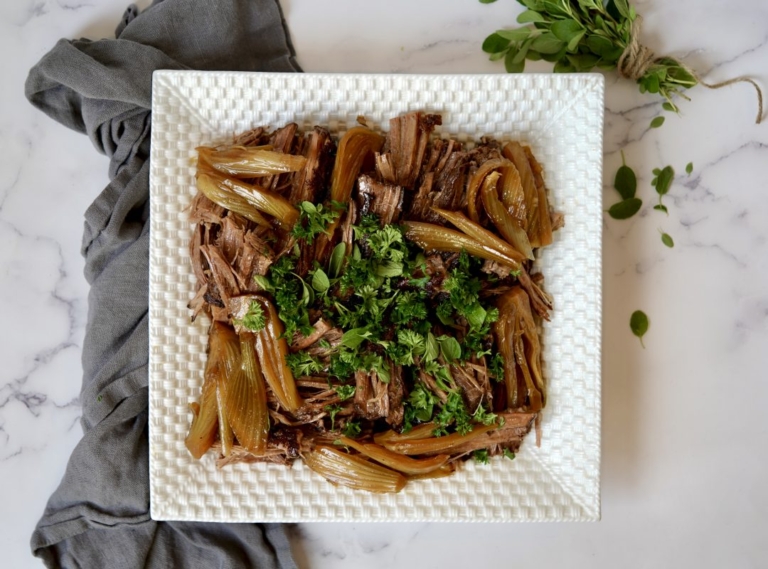
Brisket is a cut of beef not everyone knows about, but should. And Jews love it. This is my braised brisket with fennel and shallots, and it’s a great, easy dish I make during the week, but that’s also elegant enough for a holiday dinner. Braised brisket is a popular dish in Ashkenazic Jewish cuisine and has been eaten for special occasions, such as Passover, since the 1700s. And, if you’re wondering, because brisket comes from the front of the animal, it’s considered kosher.
Despite its Jewish reputation, there are many other cultures that love brisket including; Korean, German, Thai, British, Pakistani, and Vietnamese cuisine. In Israel, butchers have their special names for different cuts of beef including brisket. There, butchers refer to brisket as “bruit” and “chazeh.”
In the butchery world, brisket is one of the nine “primal cuts” of beef. The other seven primal cuts include; chuck, rib, loin, round, flank, shank, and short plate. Fresh brisket is an inexpensive boneless cut of beef that needs to be cooked slowly to break down the connective tissues. The unique thing about this cut of beef is that it can be slow-cooked so it’s “fork tender“, yet is still sliceable. Brisket also has what can be described as a better “beefy flavor” compared to other beef cuts like chuck. When cooked properly braised, smoked, or slowly roasted, brisket renders a soft and satisfying meat with incredible flavor.
Two Kinds of Brisket:
Once the whole brisket is cut in half, each half is given a different name—the first cut and the second cut. The first cut, also known as the flat cut, thin cut, or center cut, is the leaner piece of meat. The second cut has more flavor due to a bit of extra fat.
Cooking with Brisket:
Brisket is what is used to make both corned beef and pastrami. People often ask what is another cut of beef similar to brisket, but the answer is, there isn’t one. There is no cut of beef with the same cooking qualities as brisket. Shocking, I know. When cooking brisket, you must accept two important rules; one, it takes a long time to cook and two, you cannot eat it rarely. And there are no exceptions to these rules.
Brisket is a cut of beef made for slow cooking, not fast cooking. Its unique characteristic compared to other slow-cooking cuts of beef is that it holds its shape even after hours and hours of slow cooking and can be sliced. Many other cuts of slow cooking cuts of beef like chuck and short ribs, fall apart easily because more connective tissues is running throughout the meat which break down with slow cooking.
This braised brisket with shallots and fennel recipe may require some substantial cooking time, but its preparation is rather simple. As with most brisket recipes, my recipe can easily be prepped ahead and reheated without losing an ounce of flavor. Native to the Mediterranean region, fennel is one of Italy’s most popular vegetables and it’s also one of my favorite iron-rich vegetables and a great one to use when cooking brisket. In this recipe, the fennel almost caramelizes as it cooks, taking on a sweeter flavor and a melt-in-your-mouth texture that accompanies the tenderized brisket in this recipe just perfectly.
Braised Brisket With Fennel and Shallots
Ingredients:
- One (4–5 pound) piece untrimmed beef brisket
- Kosher salt
- Freshly ground black pepper
- 4 tablespoons vegetable oil, divided
- 2 shallots, roughly chopped
- 1 large fennel bulb cut through root end and sliced into 1/4-thick slices
- 3 leeks, white and light green part only, root trimmed, sliced lengthwise and cut in half
- 3 celery stalks, cut into 1-inch pieces
- 8 garlic cloves, smashed
- 1/2 bunch thyme
- 3/4 cup distilled white vinegar
- 1/4 cup low-sodium soy sauce
- 4 cups cold water
- 1/4 cup fresh parsley
- 2 tablespoons fresh oregano leaves
Directions:
- Preheat oven to 300 degrees F. Season the brisket on all sides with kosher salt and pepper and set on a rimmed baking sheet. Set aside.
- Place a large cast iron skillet over medium heat. Add 2 tablespoons of oil and when hot, but not smoking, add the brisket, fat side down, and sear until deeply browned, about 8-10 minutes. Carefully turn the brisket and continued to sear until the other side is well browned, about 8–10 minutes. Remove the brisket and place back on the baking sheet.
- Pour off the fat and discard. Add the remaining 2 tablespoons of oil into the skillet and place over medium-high heat. Add the shallots and season with salt and pepper. Cook, stirring occasionally, until softened and beginning to brown, about 3 minutes.
- Next, add the fennel, leeks, celery, garlic, and thyme and toss to coat. Season with salt and pepper. Add the vinegar, soy sauce, and water. Place the seared brisket back in the skillet, fatty side up but submerged. Bring to a simmer, then cover and place the skillet into the oven. Braise the brisket, without checking on it, for 3 hours. After 3 hours, check the brisket, it should be very tender, if not, braise for an additional 20 minutes and test it again.
- Once the brisket is tender, uncover the and increase oven temperature to 425 degrees F. Continue to roast uncovered until the liquid is reduced by three-fourths and the top of brisket is crisp and very brown as seen above, about 50-60 minutes.
- Remove the brisket from the oven and let cool slightly, then transfer to a cutting board. Use a fork to gently spread the meat apart. Skim fat from the braising liquid.
- Arrange meat on a platter. Spoon the roasted fennel and leeks on the platter. Pour some braising liquid on and around the meat. Top with parsley and oregano before serving.

